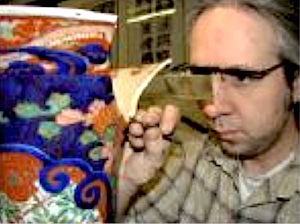Cambridge 7th to 9th September

Presenting Author:
Markus Kleine
<kleine@glasmalerei.de>
article posted 24 Feb 2015
Markus Kleine

Walls of Light:
The Art of Dalle de Verre and the Current Conservation Problems
Markus Kleine & Felix Busse
Glasmalerei Peters GmbH
Am Hilligenbusch 23-27, 33098 Paderborn
After the end of World War 2 with the general social and economic optimism, new experimental forms of design developed in art and architecture. So there was a veritable "building boom", not at least because of the destruction of many religious buildings, in church building. Particular emphasis was placed primarily on color and light effects of the interiors. Glazing acted as luminous walls because as a window in the classical sense. Both, the religious facilities as well as the architectural form, were limited to clear lines and shapes that were still pervaded by a metaphysical concept of lighting and interior design. The reduction to the essentials was followed of design and material technology. Guided by the idea of bright walls, a new technique of windows arts developed - the "dalle de verre".
The special charm of "dalle de verre" is the combination of two very contrasting materials produced by engineers with an artistic tension: on the one hand, the fragile, smooth and translucent glass, on the other hand, the massive, often raw untreated profane concrete. "Dalle de verre" are predominantly in the form of cast, beaten or cut thick glass pieces. The structure-giving connection between the individual glass elements carried by concrete and reinforced concrete ridges.
Today, however, this method is a very fragile heritage. The main causes of decay, create new problems for the restoration and preservation on. For, although concrete and glass have an almost identical thermal expansion coefficients, different colored glass warms and stretches differently great depending on the light intensity. This leads to fine cracks in the surrounding concrete, which contribute to water absorption. This water absorption and different moisture contents lead to swelling and shrinkage of concrete, which does not occur again in closed-pore glass. According to the respective strength ratios and force transmission conditions this can lead to cracks and flaking in the glass or concrete. Today visible consequences are avulsion of the concrete, deformation of the individual elements and composite structures, cracks and shells in the glass and in the worst case, the loss of stability of the static elements. Particularly large-sized windows generate a durable building physics problem here.
To their preservation to intensify dialogue of conservators and scientists is essential. In order to offer adequate solutions in this area, Glasmalerei Peters worked intensively in cooperation with the BAM Federal Institute for Materials Research and Testing, Berlin and the University of York to find possibilities of restoration and conservation of "dall de verre" windows. The examples of test restorations of glazings of St. Theodarius church in Beringen Mijn, as well as the test restoration of one panel of St. Stephanus church in Gelsenkirchen and the restoration of one window St. Michaelis church in Neustadt am Rennsteig, show the possibilities of restoration measures and the interdisciplinary cooperation.
